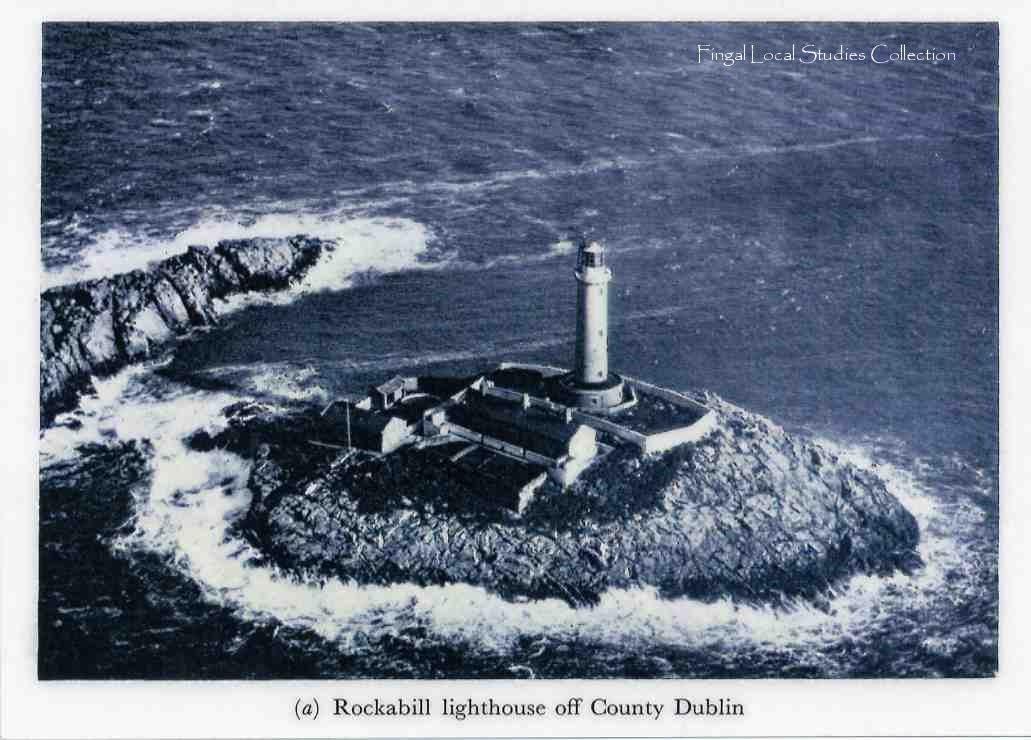The Cow and the Calf
About 5km off the coast of Skerries lie two rocky islets known collectively as Rockabill island. The official Irish name for Rockabill is Cloch Dábilla after the goddess Boand’s lapdog Dábilla who was said to have been dashed against the rocks there (Hogan 1910). However, the islets are also known as the Cow and the Calf after a local legend.

About 5km off the coast of Skerries lie two rocky islets known collectively as Rockabill island. The official Irish name for Rockabill is Cloch Dábilla after the goddess Boand’s lapdog Dábilla who was said to have been dashed against the rocks there (Hogan 1910). However, the islets are also known as the Cow and the Calf after a local legend:
Long ago, where the sea now is between the Mourn[e] mountains and the Wicklow mountains, there was land. There was a chief in Farney, in County Monaghan who owned a fairy cow which could be milked at any time. There was a giant named Balor Beimeann who stole the cow and her calf. This Balor had only one eye. It was an evil eye. Any person or animal on whom he would look would be turned into stone. Balor ordered his servant to drive the cow and calf to Wicklow. The servant set out. He kept the calf in front. Balor followed them passing Skerries the calf got tired and lagged behind. After a while the cow missed the calf and turned around to look for it. The cow saw its native Mourne mountains in the distance and let out a sorrowful loud bellow. When Balor heard the cow, he opened his eye and looked at them. They were immediately turned to stone.
(SC Vol. 0783: 379)
It is said that the smaller northern islet of Rockabill is the calcified calf while the larger southern formation is its mother who is named as the Glas Goibnenn in some versions of this story. The Glas Goibnenn is symbolic of energy and prosperity within Irish mythology, and it is said that ‘’No matter how large the vessel used to milk her; she could fill it immediately with rich creamy milk’’ (SC Vol. 0784: 168). Stories surrounding the Glas Goibnenn tell of Balor of the Evil Eye and a blacksmith contending for ownership of her. Balor was said to have been a chief of the Fomoire, a people associated with the sea, who ruled from Tory Island off the coast of Donegal. Stories from Tory tell of how Balor landed there after stealing the cow and proceeded to exact terrible tributes of milk, butter and beef from the islanders (Harrison Therman 1989: 45). The blacksmith is usually the true owner of the cow in these stories and is sometimes named as Goibnenn or the Gobbán Saor. These names are variant forms of Goibniu who was the smith of the Tuatha de Danann in Irish mythology. The name Glas Goibnenn may be derived from Goibniu’s own name identifying an intrinsic connection between the cow and the smith (O hOgain: 240; http://dil.ie/26307). These local stories may have their roots in an ancient Irish epic Cath Maige Tuired or the Battle of Moytura in which Balor, Goibniu and the Glas Goibnenn all appear. This saga is concerned with a conflict between the Fomoire and the Tuatha de Danann over the land of Ireland itself and is a classic of Irish medieval literature.
Rockabill is linked to Ulster not just by folklore but also by its physical form. It shares a geological origin with the Mourne Mountains with both being composed of granite. In fact, Rockabill is the only granite formation within Fingal, and it is from this granite that its lighthouse tower was constructed (Baker 2010: 7). The Drogheda Harbour Commissioner sought to construct the lighthouse in the 19th century due to the danger that Rockabill posed to shipping vessels navigating the Fingal coastline after dark. Its light first flashed at sunset on July 1st, 1860 and has been in operation ever since. Its automation in 1989 coincided with the appointment of Birdwatch Ireland wardens as caretakers of the island. This was due to the presence of the rare and protected Roseate Tern on Rockabill. The wardens monitor the population by attaching uniquely numbered leg rings to the birds and by watching the number of nests between May and August every year. The wardens also help the terns by clearing vegetation and setting up nest boxes for them. These measures have seen the population rise from 180 pairs to over 1600 pairs and it is now the largest Roseate Tern colony in Europe!
Want to Delve Deeper?
If you’re interested in learning more about the Rockabill terns have a look at the Rockablog here. For more information on the historic Irish Lighthouses visit the Irish Lights website here. If you want to find out more about the Moytura Saga check out the season two of the Story Archaeology podcast titled The Battle of Moytura here.
- Aoife Walshe, Swords Library.